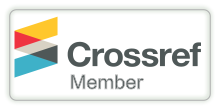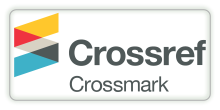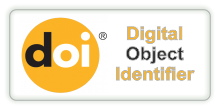TRANSFORMING TO TRANSACTIONS: HOW DIGITAL PAYMENTS SHAPE CONSUMER BEHAVIOUR
DOI:
https://doi.org/10.29121/shodhkosh.v5.i1.2024.5809Keywords:
Digital Payments, Service Sector, Consumer Behavior, User BehaviorAbstract [English]
The study objective is to examine the impact of digital payment on consumer behaviour within the service sector. It examines how technology, user behaviour and economic dimension influence consumer behaviour and engagement with digital payment system. Data were collected through surveys administered to employees across diverse service industries, including education, retail, and hospitality, who regularly interact with digital payment transactions. Regression analysis revealed that all three dimensions significantly affect consumer behavior, with economic factors exerting the strongest negative influence, followed by technological limitations and user behavior considerations. The findings indicate that economic constraints such as perceived costs and lack of incentives are primary barriers to widespread adoption, while technological issues and user-related factors also contribute meaningfully to shaping consumer perceptions and usage patterns. The study underscores the need for targeted strategies to address economic and technological barriers and to foster positive attitudes toward digital payments. These insights can inform policymakers, service providers, and technology developers seeking to promote a more cashless, efficient, and consumer-friendly payment ecosystem.
References
Nasution, L. N., Rangkuty, D. M., & Putra, S. M. (2024). The digital payment system: How does it impact Indonesia’s poverty? ABAC Journal, 44(3), 228–242. https://doi.org/10.59865/abacj.2024.37 DOI: https://doi.org/10.59865/abacj.2024.37
Ghosh, G. (2021). Adoption of digital payment system by consumer: a review of literature. International Journal of Creative Research Thoughts, 9(2), 2320-2882.
Mohan, A., Gupta, A., Agrawal, A., Banka, K., Arora, S., & Agarwal, V. (2017). Impact of e-payment systems on customer satisfaction. Int. J. Res. Appl. Sci. Eng. Technol, 9.
Sarkar, M. P. (2019). Literature review on adoption of digital payment system. Global Journal of Enterprise Information System, 11(3), 62-67.
Patil, P. P., Dwivedi, Y. K., & Rana, N. P. (2017). Digital payments adoption: an analysis of literature. In Digital Nations–Smart Cities, Innovation, and Sustainability: 16th IFIP WG 6.11 Conference on E-Business, E-Services, and E-Society, I3E 2017, Delhi, India, November 21–23, 2017, Proceedings 16 (pp. 61-70). Springer International Publishing. DOI: https://doi.org/10.1007/978-3-319-68557-1_7
Augsburg, C., Hedman, J.: Value added services and adoption of mobile payments. Sixteenth International Conference on Electronic Commerce (2014). DOI: https://doi.org/10.1145/2617848.2617851
Mobile financial services development report: http://www3.weforum.org/docs/ WEF_MFSD_Report_2011.pdf, (2011).
Nigam, R., Patel, S., & Gupta, M. (2024). The impact of digitalization on consumer financial services. International Journal of Financial Studies, 22(2), 150-165
Bajpai, S., Mazhar, S. S., Khan, F. S., Prakash, G., & Singh, A. (2022). Empirical study on customer satisfaction with the services of the Life Insurance Corporation at Lucknow. Journal of Information and Optimization Sciences 43(7), 1871–1883. https://doi.org/10.1080/02522667.2022.2128538. DOI: https://doi.org/10.1080/02522667.2022.2128538
Akhlaq, M.N., Khan, A.T., & Khan, F.S. (2022). Role of fintech in bridging financial inclusion gap: during and post-covid 19 World. International Journal of Humanities, Law and Social Sciences, IX(1/1), 113-130.
Purba, J.T. (2015). Applied ICT Innovation Services of Academic Information System: Strategy for Higher Educational Management. Proceeding. International Conference of Organizational Innovation (ICOI). Yogyakarta, Indonesia.
Liu J., Kauffman R.J., Ma D., 2015, Competition, cooperation, and regulation: Understanding the evolution of the mobile payments technology ecosystem,"Electronic Commerce Research and Applications", 14(5). DOI: https://doi.org/10.1016/j.elerap.2015.03.003
Thakur R., Srivastava M., 2014, Adoption readiness, personal innovativeness, perceived risk and usage intention across customer groups for mobile payment services in India,"Internet Research", 24(3). DOI: https://doi.org/10.1108/IntR-12-2012-0244
Jack W., Suri T., 2011, Mobile money: The economics of M-PESA, NBER Working Paper, 16721. DOI: https://doi.org/10.3386/w16721
Solomon, M. R. (2018). Consumer behavior: Buying, having, and being (12th ed.)
Kotler, P., & Keller, K. L. (2016). Marketing management (15th ed.).
Lonare, A., Yadav, A., & (India), S. S. (2018). E-wallets: Diffusion and adoption in Indian economy. Indian Journal of Commerce & Management Studies, IX(2), 09. https://doi.org/10.18843/ijcms/v9i2/02 DOI: https://doi.org/10.18843/ijcms/v9i2/02
Mishra, A., Gunasekar, S. and Gupta, D. (2016) ‘Influence of product perception and discounts on the preference of online payment’, 2016 IEEE International Conference on Computational Intelligence and Computing Research (ICCIC), IEEE, December, pp.1–4. DOI: https://doi.org/10.1109/ICCIC.2016.7919691
Shree, S., Pratap, B., Saroy, R. and Dhal, S. (2021) ‘Digital payments and consumer experience in India: a survey based empirical study’, Journal of Banking and Financial Technology, Vol. 5, No. 1, pp.1–20. DOI: https://doi.org/10.1007/s42786-020-00024-z
Downloads
Published
How to Cite
Issue
Section
License
Copyright (c) 2024 Rohit Dhyani, Dr. Monika Bangari

This work is licensed under a Creative Commons Attribution 4.0 International License.
With the licence CC-BY, authors retain the copyright, allowing anyone to download, reuse, re-print, modify, distribute, and/or copy their contribution. The work must be properly attributed to its author.
It is not necessary to ask for further permission from the author or journal board.
This journal provides immediate open access to its content on the principle that making research freely available to the public supports a greater global exchange of knowledge.































